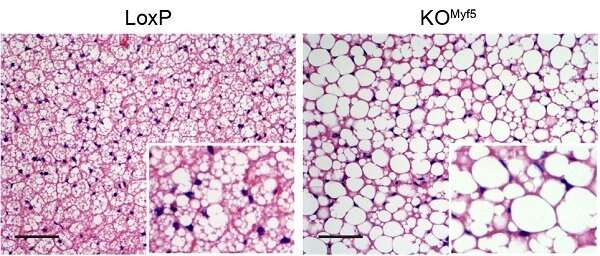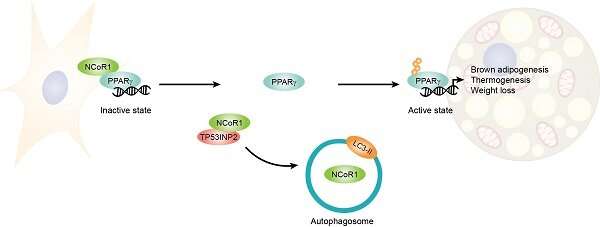
Obesity is a growing global health problem, the prevalence of which has tripled since 1975. It currently affects 650 million people worldwide, and in Spain the prevalence among adults is 28%. This pathology is related to cardiovascular diseases, type 2 diabetes, osteoarthritis and certain forms of cancer.
There are two types of adipose tissue responsible for managing the body’s fat reserves. White adipose tissue stores energy reserves in lipid form, and brown adipose tissue oxidizes lipids to produce heat.
Now, a team has described a mechanism that regulates the correct formation of the brown adipose tissue through a natural cell renewal process: a mechanism called autophagy. In the study, published in the journal Autophagy, the team states how the NCOR1 protein needs to be degraded through autophagy to ensure the correct development of the brown adipose tissue cells.
The study is led by Antonio Zorzano, professor at the Department of Biochemistry and Molecular Biomedicine of the Faculty of Biology of the University of Barcelona, head of the IRB Barcelona Laboratory of Complex Metabolic Diseases and Mitochondria and head of the Biomedical Research Networking Center in Diabetes and Associated Metabolic Disorders (CIBERDEM).
The protein that marks NCOR1 for its removal is TP53INP2, which has been studied for years in the IRB Barcelona Laboratory of Complex Metabolic Diseases and Mitochondria. Using animal mouse models, researchers observed that a defective or insufficient adipose tissue—the elimination of TP53INP2 causes an error in the degradation of NCOR1—is associated with higher levels of obesity.

“There is a clear correlation between low levels of brown adipose tissue and obesity, but we still do not know if obesity is the cause or the consequence. Our discovery paves the way to intervening in autophagic processes to reinforce this brown adipose tissue and thus prevent or treat obesity and other associated metabolic diseases,” notes Zorzano.
Autophagy as a regulatory tool
Autophagy is a natural process through which cellular components are degraded. Initially, researchers believed that this process was mainly devoted to cleaning up damaged or old cell elements. However, for some years now, scientific evidence has shown it as a key element in the regulation of cellular functions through the elimination of proteins that perform specific functions.
The study links autophagy and obesity through the development of the brown adipose tissue. “In a previous study, we had seen that the TP53INP2 protein has the opposite effect on the formation of the white adipose tissue, i.e., it represses its formation. This makes this protein an ally for a healthier management of fats, as it both promotes their oxidation and prevents their accumulation,” explains Alba Sabaté, postdoctoral researcher at the IRB Barcelona Laboratory of Complex Metabolic Diseases and Mitochondria and first author of the study.
University of Barcelona

